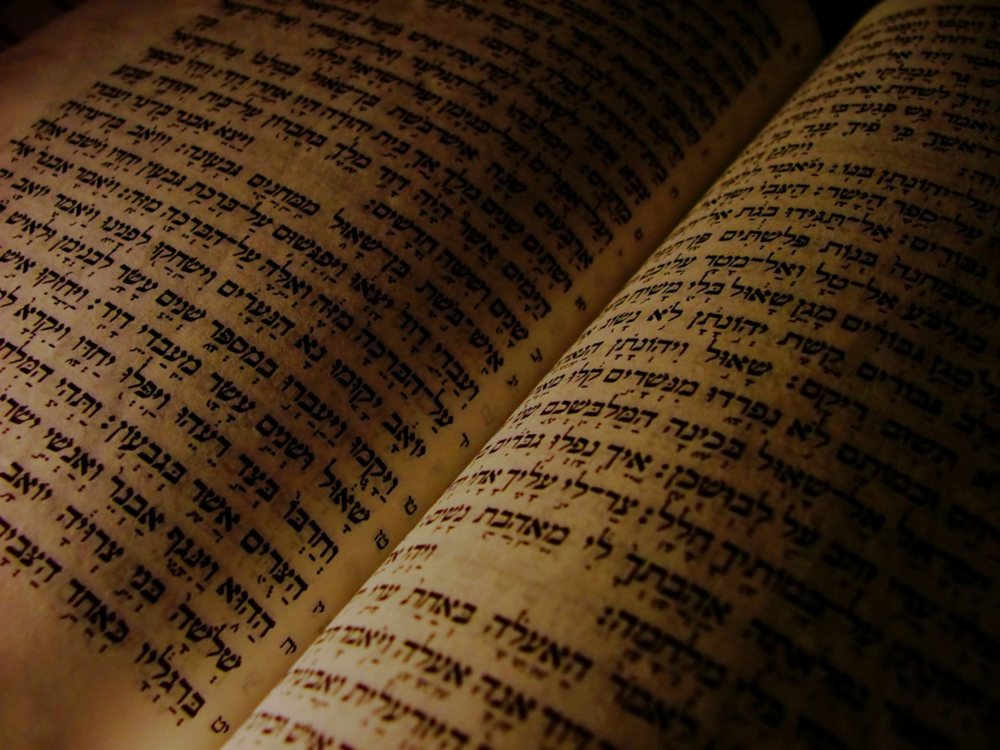The Bible is a collection of sacred scriptures revered by Christians and is divided into two main sections: the Old Testament and the New Testament. The Old Testament, sometimes referred to as the Hebrew Bible, contains 39 books that are foundational to both Judaism and Christianity.
These books include historical accounts, poetry, prophetic writings, and laws that trace the history and religious traditions of the ancient Israelites.
The New Testament, on the other hand, comprises 27 books that form the core of Christian faith. It begins with the life and teachings of Jesus Christ as recorded in the four Gospels and continues with the early history of the Christian Church in the Acts of the Apostles.
The remaining books consist of letters (epistles) written by apostles and leaders of the early Christian community, addressing theological, ethical, and practical aspects of the Christian faith.
The New Testament concludes with the Book of Revelation, an apocalyptic work that envisions the future and emphasizes God’s ultimate sovereignty.
Together, the books of the Bible provide a rich and diverse tapestry of religious, historical, and moral guidance that has profoundly influenced Western civilization and continues to be a source of inspiration, guidance, and reflection for billions of people around the world.
| Book(Old Testament) | Estimated Writing Date |
|---|---|
| Genesis | 1450-1410 BCE |
| Exodus | 1450-1410 BCE |
| Leviticus | 1445-1405 BCE |
| Numbers | 1445-1405 BCE |
| Deuteronomy | 1445-1405 BCE |
| Joshua | 1350-1200 BCE |
| Judges | 1050-1000 BCE |
| Ruth | 1000-950 BCE |
| 1 Samuel | 930-540 BCE |
| 2 Samuel | 930-540 BCE |
| 1 Kings | 930-540 BCE |
| 2 Kings | 930-540 BCE |
| 1 Chronicles | 450-430 BCE |
| 2 Chronicles | 450-430 BCE |
| Ezra | 450-400 BCE |
| Nehemiah | 450-400 BCE |
| Esther | 450-350 BCE |
| Job | 600-400 BCE |
| Psalms | 1000 BCE – 300 BCE |
| Proverbs | 950-700 BCE |
| Ecclesiastes | 450-200 BCE |
| Song of Solomon | 950-350 BCE |
| Isaiah | 740-680 BCE |
| Jeremiah | 626-586 BCE |
| Lamentations | 586 BCE |
| Ezekiel | 593-573 BCE |
| Daniel | 605-530 BCE |
| Hosea | 750-715 BCE |
| Joel | 830-800 BCE |
| Amos | 760-750 BCE |
| Obadiah | 586-520 BCE |
| Jonah | 780-760 BCE |
| Micah | 735-700 BCE |
| Nahum | 663-612 BCE |
| Habakkuk | 610-605 BCE |
| Zephaniah | 630-620 BCE |
| Haggai | 520-510 BCE |
| Zechariah | 520-480 BCE |
| Malachi | 450-400 BCE |
| Book(New Testament) | Estimated Writing Date |
|---|---|
| Matthew | 50-70 CE |
| Mark | 50-70 CE |
| Luke | 60-80 CE |
| John | 70-100 CE |
| Acts | 62-90 CE |
| Romans | 56-58 CE |
| 1 Corinthians | 55-57 CE |
| 2 Corinthians | 55-57 CE |
| Galatians | 48-49 CE |
| Ephesians | 60-62 CE |
| Philippians | 60-62 CE |
| Colossians | 60-62 CE |
| 1 Thessalonians | 51-52 CE |
| 2 Thessalonians | 51-52 CE |
| 1 Timothy | 62-67 CE |
| 2 Timothy | 62-67 CE |
| Titus | 62-67 CE |
| Philemon | 60-62 CE |
| Hebrews | 60-90 CE |
| James | 45-50 CE |
| 1 Peter | 60-64 CE |
| 2 Peter | 60-68 CE |
| 1 John | 90-100 CE |
| 2 John | 90-100 CE |
| 3 John | 90-100 CE |
| Jude | 60-80 CE |
| Revelation | 90-95 CE |
Timeline of the Books of the Bible
Genesis:
The book of Genesis is the first book of the Bible and serves as the foundation of the entire biblical narrative.
It begins with the creation story and goes on to describe the early history of humanity, the patriarchs such as Abraham, Isaac, and Jacob, and the origins of the Israelite people.
It also includes stories like Adam and Eve, Noah’s Ark, and the Tower of Babel.
Exodus:
Exodus recounts the story of the Israelites’ liberation from slavery in Egypt under the leadership of Moses. It includes the giving of the Ten Commandments at Mount Sinai and the construction of the Tabernacle, a portable sanctuary for worship.
Leviticus:
Leviticus is primarily concerned with laws and rituals related to the priesthood, sacrifices, and purification. It outlines various moral and religious guidelines for the Israelite community and emphasizes holiness and obedience to God.
Numbers:
The book of Numbers continues the story of the Israelites as they wander in the wilderness for 40 years. It includes a census of the Israelite tribes, accounts of their journeys, and various laws and regulations.

Deuteronomy:
Deuteronomy is a series of speeches attributed to Moses as he prepares the Israelites to enter the Promised Land. It includes a recapitulation of the law, blessings and curses, and emphasizes the importance of faithfulness to God’s commandments.
Joshua:
Joshua picks up where Deuteronomy leaves off and tells the story of the conquest of the Promised Land under the leadership of Joshua. It describes the Israelites’ victories, the division of the land among the tribes, and the renewal of the covenant with God.
Judges:
The book of Judges recounts a period of Israel’s history marked by cycles of apostasy, oppression by foreign nations, and deliverance through various judges, such as Deborah, Gideon, and Samson. It illustrates the consequences of turning away from God.
Ruth:
Ruth is a short narrative that tells the story of Ruth, a Moabite woman, who becomes a faithful follower of the God of Israel and the great-grandmother of King David. It emphasizes loyalty, kindness, and God’s providence.
1 Samuel:
1 Samuel introduces the prophet Samuel and the transition from the period of the judges to the establishment of the monarchy in Israel. It includes the anointing of Saul as the first king and later, the anointing of David as king.
2 Samuel:
2 Samuel continues the story of David’s reign as king of Israel. It includes accounts of his military conquests, his relationship with God, and his struggles and triumphs as a leader.
1 Kings:
The book of 1 Kings continues the historical narrative of the Israelite monarchy. It covers the reign of King Solomon, known for his wisdom and the construction of the First Temple in Jerusalem. After Solomon’s death, the kingdom splits into the northern kingdom of Israel and the southern kingdom of Judah, setting the stage for subsequent events.
2 Kings:
2 Kings picks up where 1 Kings leaves off and provides an account of the history of the divided kingdoms of Israel and Judah. It includes the stories of various kings, prophets like Elijah and Elisha, and the eventual fall of both kingdoms to foreign invaders.
1 Chronicles:
1 Chronicles is a retelling of the history of Israel, focusing on genealogies and the lineage of King David. It also highlights the importance of worship, the organization of priests and Levites, and the preparation for building the Temple in Jerusalem.
2 Chronicles:
Like 1 Chronicles, 2 Chronicles continues the historical account of Israel. It covers the reign of King Solomon, the construction of the Temple, and the subsequent kings of Judah. The book emphasizes the importance of faithfulness to God and the consequences of disobedience.
Ezra:
The book of Ezra details the return of a group of Israelites from Babylonian exile to Jerusalem and the rebuilding of the Temple. Ezra, a priest and scribe, plays a significant role in restoring the Jewish community’s religious practices and traditions.
Nehemiah:
Nehemiah follows Ezra and describes the efforts of Nehemiah, a cupbearer to the Persian king, to rebuild the walls of Jerusalem. It also focuses on the restoration of Jewish identity and reforms in Jerusalem after the return from exile.
Esther:
The book of Esther is a unique narrative that tells the story of Esther, a Jewish woman who becomes queen of Persia. It recounts her courage in saving the Jewish people from a plot to exterminate them, orchestrated by the wicked Haman.

Job:
Job is a poetic and philosophical book that explores the theme of human suffering and the question of why the righteous sometimes suffer. It tells the story of Job, a man who experiences immense suffering, and his conversations with friends about the nature of God and suffering.
Psalms:
Psalms is a collection of 150 poetic and lyrical songs and prayers that cover a wide range of emotions and themes. These include praise and worship, thanksgiving, lament, and expressions of faith. Many of the psalms are attributed to King David.
Proverbs:
The book of Proverbs is a collection of wise sayings and practical advice for living a righteous and godly life. It addresses various aspects of life, including morality, relationships, work, and character development. It is traditionally attributed to King Solomon.
Ecclesiastes:
Ecclesiastes is a philosophical book attributed to King Solomon. It explores the meaning of life and the pursuit of wisdom, pleasure, and wealth. The book ultimately concludes that true fulfillment is found in fearing God and keeping His commandments.
Song of Solomon (Song of Songs):
This poetic book celebrates love and desire within the context of a marriage relationship. It is often seen as an allegory of the love between Christ and His church in Christian theology.
Isaiah:
The book of Isaiah is one of the major prophetic books in the Old Testament. It contains the prophecies of Isaiah, a prophet who ministered during the time of the divided kingdom. Isaiah’s prophecies cover a wide range of topics, including judgment, restoration, and the coming Messiah.
Jeremiah:
Jeremiah was a prophet who lived during a tumultuous period in Israel’s history. His book contains prophecies of impending judgment and exile due to the nation’s disobedience. Jeremiah also provides messages of hope and the promise of a new covenant.
Lamentations:
Lamentations is a collection of poetic laments mourning the destruction of Jerusalem and the suffering of the people during the Babylonian exile. It reflects on the consequences of sin and the need for repentance.
Ezekiel:
Ezekiel was a prophet among the exiles in Babylon. His book contains vivid and symbolic visions that convey messages of judgment, restoration, and the glory of God. It includes the famous vision of the valley of dry bones.
Daniel:
The book of Daniel tells the story of Daniel, a young Israelite taken into Babylonian captivity. It includes accounts of Daniel’s wisdom, his interpretation of dreams, and his experiences in the Babylonian and Persian courts. It also features apocalyptic visions.
Also Read: Book of Daniel Timeline

Hosea:
Hosea’s prophecies focus on the theme of God’s love and faithfulness despite Israel’s unfaithfulness. Hosea’s own marriage to an unfaithful wife serves as an allegory for God’s relationship with Israel.
Joel:
Joel’s book addresses themes of repentance, God’s judgment, and the outpouring of the Holy Spirit. It includes vivid descriptions of locust plagues and anticipates a day of the Lord when God will intervene in history.
Amos:
Amos was a shepherd and prophet who denounced social injustices and moral corruption in Israel. His book contains powerful messages of judgment against the wealthy and powerful, emphasizing the importance of justice and righteousness.
Obadiah:
Obadiah is the shortest book in the Old Testament, consisting of only one chapter. It contains a prophecy against the nation of Edom, which had mistreated the Israelites during their time of distress. The book emphasizes God’s judgment on the proud and His ultimate restoration of His people.
Jonah:
The book of Jonah tells the story of the prophet Jonah who is called by God to go to the city of Nineveh and deliver a message of repentance. Jonah initially tries to flee from God’s call but is eventually swallowed by a great fish and later obeys God’s command. The book highlights God’s compassion and willingness to extend mercy even to pagan nations.
Micah:
Micah was a prophet who addressed social injustice and the moral decline of Israel. His book includes prophecies of judgment and restoration. One of the most well-known verses from Micah is Micah 6:8, which emphasizes the importance of doing justice, loving kindness, and walking humbly with God.
Nahum:
Nahum’s book is a prophecy against the city of Nineveh, the capital of the Assyrian Empire. It predicts the downfall of Nineveh and the Assyrian Empire, highlighting God’s justice and the deliverance of His people.
Habakkuk:
Habakkuk is a book that records the prophet’s dialogue with God. Habakkuk questions God about the presence of evil and injustice in the world and receives God’s responses. The book emphasizes the importance of faith and trust in God even in the midst of difficult circumstances.
Zephaniah:
Zephaniah’s prophecies focus on the coming “day of the Lord,” a time of judgment and purification. The book calls for repentance and the seeking of God’s righteousness as a means of escape from His judgment.
Haggai:
Haggai’s book addresses the post-exilic community of Israel as they rebuild the Temple in Jerusalem. Haggai encourages the people to prioritize the rebuilding of God’s house and promises God’s presence and blessing upon their efforts.
Zechariah:
Zechariah is a prophetic book that contains visions and messages of encouragement for the returned exiles. It emphasizes the coming Messiah and the establishment of God’s kingdom. Zechariah also contains Messianic prophecies, including the portrayal of the Messiah as the humble King riding on a donkey.
Malachi:
Malachi is the final book of the Old Testament and addresses issues of spiritual decline and apathy among the people of Israel. The book contains messages of rebuke and calls for repentance. It ends with a prophecy about the coming of Elijah before the “great and dreadful day of the Lord.”
Matthew:
The Gospel of Matthew is the first book in the New Testament and presents a detailed account of the life, teachings, and ministry of Jesus Christ. It emphasizes Jesus as the fulfillment of Old Testament prophecies and the Messiah promised to the Jewish people.
Mark:
The Gospel of Mark is the shortest of the four Gospels and offers a fast-paced narrative of Jesus’ ministry, focusing on His actions and miracles. It portrays Jesus as a powerful and compassionate healer.
Luke:
The Gospel of Luke is known for its emphasis on Jesus’ compassion for the marginalized and his concern for all people, including women and outcasts. It includes the birth narratives of Jesus and provides a detailed genealogy.
John:
The Gospel of John offers a unique theological perspective, emphasizing the divinity of Jesus. It contains profound discourses and symbolic language, such as the “I am” statements of Jesus, highlighting His identity as the Son of God.
Also Read: Timeline of the Gospel of John
Acts:
The Book of Acts, also known as the Acts of the Apostles, continues the narrative from the Gospel of Luke and recounts the early history of the Christian Church. It describes the activities of the apostles, the coming of the Holy Spirit at Pentecost, and the spread of Christianity.
Romans:
The Book of Romans is an epistle written by the Apostle Paul. It is a comprehensive theological treatise that addresses key doctrines of salvation, justification by faith, and the role of the law in the life of a Christian. It is often considered Paul’s magnum opus.
1 Corinthians:
1 Corinthians is another letter written by the Apostle Paul to address various issues within the Corinthian church. It deals with topics like divisions within the church, moral issues, the Lord’s Supper, and the resurrection of the dead.
2 Corinthians:
2 Corinthians is Paul’s second letter to the Corinthians. In this letter, Paul defends his apostolic authority, encourages generosity in giving, and discusses his personal experiences and hardships in ministry.
Galatians:
The Epistle to the Galatians is a letter from Paul that addresses the issue of legalism and the sufficiency of faith in Christ for salvation. Paul emphasizes freedom in Christ and argues against reliance on the law for justification.
Ephesians:
The Letter to the Ephesians is often regarded as a “circular letter” meant to be shared among various churches. It focuses on topics such as unity in the body of Christ, God’s plan for redemption, and the spiritual armor of believers.
Philippians:
The Letter to the Philippians is another epistle written by the Apostle Paul. It is often called the “Letter of Joy” because it emphasizes joy and contentment in Christ despite difficult circumstances. Paul expresses his gratitude for the support of the Philippian church and encourages them to maintain unity and humility.
Colossians:
The Letter to the Colossians, also written by Paul, addresses theological issues related to the person and work of Christ. It emphasizes the supremacy of Christ and warns against false teachings. Paul encourages the Colossians to remain rooted in Christ.
1 Thessalonians:
1 Thessalonians is one of Paul’s earliest letters. It expresses his joy at the faith and perseverance of the Thessalonian believers despite persecution. The letter also addresses questions about the Second Coming of Christ and encourages holy living.
2 Thessalonians:
2 Thessalonians is a follow-up letter to the Thessalonians. It provides further instruction about the Second Coming of Christ and emphasizes the need for diligence and order within the church.
1 Timothy:
The First Epistle to Timothy is one of the Pastoral Epistles written by Paul. It offers guidance to Timothy, a young pastor, on church leadership, the qualifications of elders and deacons, and the conduct of church members.
2 Timothy:
2 Timothy is the second letter to Timothy and serves as a personal letter from Paul to his young protégé. In this farewell letter, Paul encourages Timothy to remain faithful in ministry and to continue preaching the Word.
Titus:
The Epistle to Titus is another of the Pastoral Epistles. It is addressed to Titus, who is instructed by Paul on appointing church leaders, maintaining sound doctrine, and living in a manner that reflects the grace of God.
Philemon:
Philemon is a short letter written by Paul to Philemon, a Christian slaveowner, on behalf of Onesimus, a runaway slave who had become a Christian. Paul appeals to Philemon to receive Onesimus as a brother in Christ and to treat him with love and forgiveness.
Hebrews:
The Letter to the Hebrews is unique in its style and content. Although its authorship is uncertain, it is known for its rich theological exploration of the superiority of Christ and His priesthood. It emphasizes the New Covenant and the need for faith in Christ.
James:
The Epistle of James is attributed to James, the brother of Jesus. It is a practical and ethical letter that emphasizes the importance of faith combined with good works. James addresses issues such as patience, the control of one’s speech, and caring for the needy.
1 Peter:
The First Epistle of Peter is written by the apostle Peter and is addressed to Christian communities facing persecution. It encourages believers to stand firm in their faith and hope in Christ, even in the midst of suffering.
2 Peter:
Second Peter is also attributed to Peter. It focuses on the importance of spiritual growth and the dangers of false teachers and their destructive teachings. The letter urges believers to be vigilant and to grow in the knowledge of Christ.
1 John:
The First Epistle of John is written by the apostle John and emphasizes the themes of love, fellowship with God, and the assurance of salvation. John also addresses the importance of loving one another as a mark of genuine faith.
2 John:
Second John is a brief letter, also authored by John, which emphasizes the importance of walking in truth and love. It warns against receiving false teachers and encourages believers to remain faithful to the teachings of Christ.
3 John:
Third John is another short letter from John, addressing hospitality and support for traveling missionaries. It commends those who faithfully support the spread of the Gospel and contrasts them with a negative example.
Jude:
The Epistle of Jude is attributed to Jude, a brother of James. It warns against false teachers who have infiltrated the Christian community and calls believers to contend earnestly for the faith delivered to the saints.
Revelation:
The Book of Revelation, authored by the apostle John, is a highly symbolic and apocalyptic work that unveils a series of visions concerning the future. It contains messages to seven churches, descriptions of heavenly worship, and prophecies about the final judgment, the return of Christ, and the establishment of God’s kingdom.
